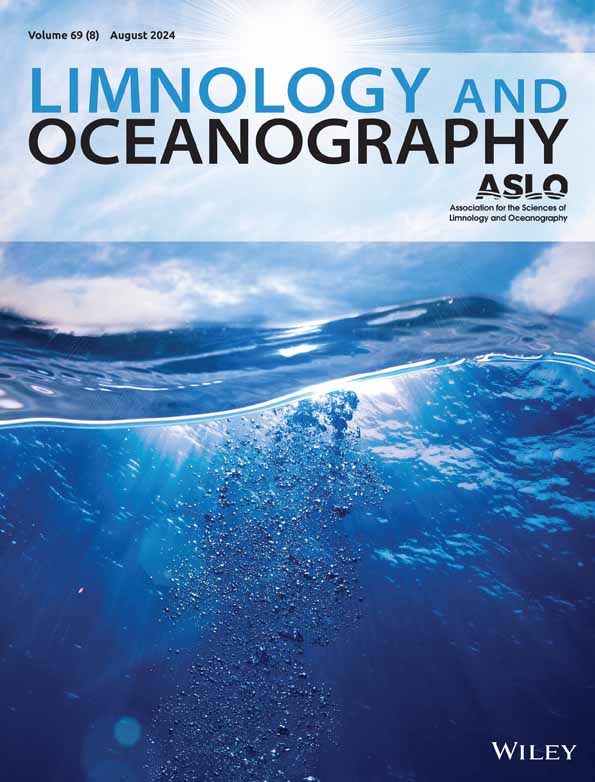Springtime upwelling conditions influence microbial communities and dissolved thiamin compounds in the California Current Ecosystem
IF 3.8
1区 地球科学
Q1 LIMNOLOGY
引用次数: 0
Abstract
Understanding dissolved concentrations of the essential coenzyme thiamin (vitamin B春季上升流条件影响加州洋流生态系统中的微生物群落和溶解的硫胺素化合物
了解必需辅酶硫胺素(维生素B1)的溶解浓度可以为高效上升流系统(如加利福尼亚洋流生态系统)的生物控制提供见解。为了将硫胺素的有效性与加州洋流生态系统中的微生物群落联系起来,我们测量了春季溶解硫胺素及其生化相关成分(硫胺素同系物)和基于16S rRNA基因的微生物群落的浓度。我们发现,相对于弱上升流时期,强上升流导致溶解的硫胺素前体化合物和非生物降解产物的消耗。特定的微生物类群,包括SAR11生态型、Candidatus Nitrosopumilus和SUP05群,也在强烈的上升流中显著富集。我们的数据提供了证据,表明由于上升流导致的混合层微生物群落的变化可能会限制加州洋流生态系统中溶解的硫胺素及其化学同系物的可用性。
本文章由计算机程序翻译,如有差异,请以英文原文为准。
求助全文
约1分钟内获得全文
求助全文
来源期刊

Limnology and Oceanography
地学-海洋学
CiteScore
8.80
自引率
6.70%
发文量
254
审稿时长
3 months
期刊介绍:
Limnology and Oceanography (L&O; print ISSN 0024-3590, online ISSN 1939-5590) publishes original articles, including scholarly reviews, about all aspects of limnology and oceanography. The journal''s unifying theme is the understanding of aquatic systems. Submissions are judged on the originality of their data, interpretations, and ideas, and on the degree to which they can be generalized beyond the particular aquatic system examined. Laboratory and modeling studies must demonstrate relevance to field environments; typically this means that they are bolstered by substantial "real-world" data. Few purely theoretical or purely empirical papers are accepted for review.
 求助内容:
求助内容: 应助结果提醒方式:
应助结果提醒方式:


